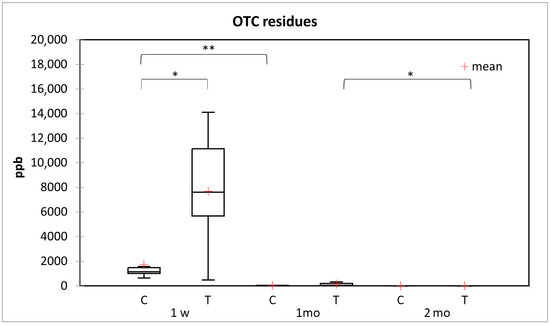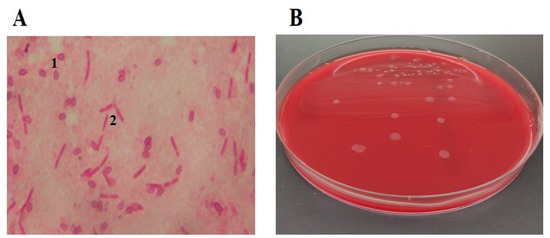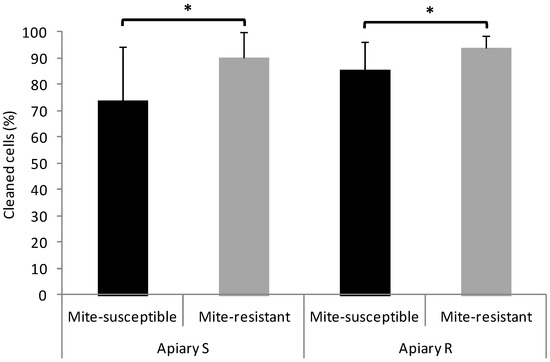One-Health Approach to Bee Health
A topical collection in Veterinary Sciences (ISSN 2306-7381).
Viewed by 12432Editors
Interests: honeybee; pathogens; microbiology; molecular biology; antimicrobials; bacterial infectious disease; zoonosis; antimicrobial resistance; nosemosis; bee viral disease; bee health
Special Issues, Collections and Topics in MDPI journals
Interests: honeybee; nosemosis; bee health
Special Issues, Collections and Topics in MDPI journals
Topical Collection Information
Dear Colleagues,
Following the growing interest in the health of bees, and pollinators in general, this Topical Collection aims to bring together most work on the topic. The health of pollinators is strictly related to the health of honey bees and wild bees, and vice versa.
Honey bee diseases are continuously studied by researchers to investigate their relationship with host/parasites. The diseases are caused by several types of pathogens: bacteria (such as Melissococcus plutonius and Paenibacillus larvae), microsporidia (such as Nosema apis and Nosema ceranae) fungi (such as Ascosphaera apis), trypanosomatids (such as Lotmaria passim, Crithidia mellificae, and C. bombi), mites (such as Varroa destructor), predatory wasps (including Vespa velutina), and invasive beetle (such as Aethina tumida), all of which are of great veterinary interest. Honey bee viruses (especially Deformed wing virus, Chronic bee paralysis virus, Black queen cell virus, Acute bee paralysis virus) also play an important ecological role, spread by direct contact on flowers.
All these pathogens may infect not only other bees (Bombus spp., Osmia spp., Megachile spp., Lasioglossum spp.) but also other pollinators and invasive species. Further, the host–pathogen interactions for bee health have been included in a multifactorial approach, involving a dynamic balance among a range of threats and resources interacting at multiple levels of scale.
The aim of this Topical Collection is to explore bee health through a series of research articles focused on different aspects of bee health, including Apis mellifera but also other wild bee species, at different levels of organization, including molecular health, microbial health, population genetic health, and interaction with invasive species that live in close contact with the bee population.
Dr. Giovanni Cilia
Dr. Antonio Nanetti
Collection Editors
Manuscript Submission Information
Manuscripts should be submitted online at www.mdpi.com by registering and logging in to this website. Once you are registered, click here to go to the submission form. Manuscripts can be submitted until the deadline. All submissions that pass pre-check are peer-reviewed. Accepted papers will be published continuously in the journal (as soon as accepted) and will be listed together on the collection website. Research articles, review articles as well as short communications are invited. For planned papers, a title and short abstract (about 100 words) can be sent to the Editorial Office for announcement on this website.
Submitted manuscripts should not have been published previously, nor be under consideration for publication elsewhere (except conference proceedings papers). All manuscripts are thoroughly refereed through a single-blind peer-review process. A guide for authors and other relevant information for submission of manuscripts is available on the Instructions for Authors page. Veterinary Sciences is an international peer-reviewed open access monthly journal published by MDPI.
Please visit the Instructions for Authors page before submitting a manuscript. The Article Processing Charge (APC) for publication in this open access journal is 2100 CHF (Swiss Francs). Submitted papers should be well formatted and use good English. Authors may use MDPI's English editing service prior to publication or during author revisions.
Keywords
- honey bee
- Apis mellifera
- bee health
- wild bees
- bee pathogens
- bee viruses
- bee bacteria
- microsporidia
- spillover
- host-pathogen interaction
- bumblebee
- infectious disease
- honeybee–wild bee spillover
- invasive pest
- insect pollinators
- Nosema ceranae
- Ascosphaera apis
- Lotmaria passim
- acute bee paralysis virus (ABPV)
- chronic bee paralysis virus (CBPV)
- deformed wing virus (DWV)
- sac brood virus (SBV)
- Kashmir bee virus (KBV)











